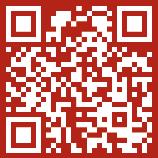














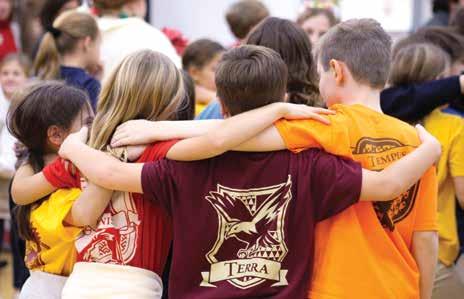






Dear Schenck School Community,
I’m filled with pride and enthusiasm for the theme we’ve chosen to lead with this edition of The Story: “Celebrating Our Strengths.” As a fellow alumnus, former parent, and your current Board Chair, I understand the resilience, creativity, and determination that define The Schenck School experience. These qualities are not just part of our history; they are our collective strength, shaping a community that uplifts every member.
The Story celebrates these strengths, showcasing the achievements and unique journeys of our alumni, students, and their families. This magazine reflects our shared commitment to excellence and the profound impact of The Schenck School’s approach to education for individuals with dyslexia.
This magazine aims to celebrate our community’s achievements and inspires us to look forward to the future with hope and ambition. It reminds us that the strength of The Schenck School lies not just in its innovative programs or the expertise of its staff but also in the spirit and accomplishments of its people.
I hope that as you turn these pages, you feel a renewed sense of connection to The Schenck School and pride in our collective accomplishments. Let us continue to celebrate our strengths, support each other, and build on the incredible legacy of our school.
Thank you for being an essential part of this journey. Here’s to celebrating our strengths together.
Warmest regards,
Jeffrey Wright ’88, P’19,’19,’22 Board ChairMr. Jeffrey L. Wright, Chair
Dr. Mark R. Bell II
Mrs. Sarah P. Bottini
Mrs. Nancy Bryant
Mr. James B. Chapman, Sr.
Ms. Jennifer R. Dangar
Mrs. Katherine Denny
Mr. John A. Draughon, Jr.
Mr. John Curtis Fisher
Mr. Robert C. Hill, Jr.
Mr. Andrew Kang
Mrs. Elizabeth S. Miller-Tucker
Dr. Arun Mohan
Mrs. Jennifer C. Morgan
Mr. Paul M. Ollinger
Mr. Mark N. Phillips
Mrs. Michaeline M. Roland
Mr. Richard R. Rollins III
Mrs. Elizabeth J. Shults
Mrs. Caroline H. Wildman
Mrs. Betty Ann H. Abblitt
Mr. Richard M. Asbill
Mr. Frank J. Belatti
Mrs. Kimberly R. Berman
Mr. Kenneth W. Bomar
Mr. Emmet J. Bondurant
Mrs. Kay Bondurant
Mr. Joseph Breiner
Mr. Eric B. Brock
Mrs. Evelyn Carter
Mr. J. Donald Childress
Mrs. Barbara M. Coats
Mr. Richard W. Courts IV
Mrs. Emily Dannals Davis
Mrs. Margaret P. Denny
Mr. Mark L. Feidler
Mr. R. Brad Foster
Mr. and Mrs. J. Rex Fuqua
Mr. S. Taylor Glover
Mrs. Nancy Green
Mr. David P. Higgins
Mr. Brannon A. Huntz
Mr. Charles D. Hurt III
Dr. E. Ladd Jones III
Mrs. Andrea M. Kauffman
Dr. John C. Knox
Mrs. Kimberly C. Marks
Mr. Laurin M. McSwain

Mr. John W. Miller II
Dr. Carlos S. Moreno
Mrs. Mary E. Morris
Mrs. Joan B. Pattillo
Mr. Neal J. Quirk
Mrs. Selma Ridgway
Mrs. Tina S. Roddenbery
Mrs. Margaret H. Rollins
Ms. Pamela R. Rollins
Mr. H. Jerry Rosenberg III
Dr. Randal H. Rudderman
Dr. Ernst M. Ruder
Mrs. Ellen F. Schneidau
Mrs. Linda Sewell
Mr. Taylor W. Smith
Mrs. Janice K. Story
Mr. Calvin S. Stowell
Mr. David B. Stromquist
Mr. S. Andrew Sullivan
Mr. F. Neal Sumter III
Mrs. Julie Vickers
Mrs. Gwyneth G. Webb
Mr. Peter C. White
Mrs. Polly Williams
Mr. Robert G. Woodward
The Schenck School Magazine Spring 2024
Editor: Katie Harrigan Director of Communications and Marketing
Contributing Editors: Janie Beck
Dr. Kara Loftin
Contributors: Janie Beck
Loretta Edmond
Dr. Kara Loftin
Lily Stowell
Jana Thomas
Various Faculty and Staff
Graphic Design and Art Direction: Dawn Stein
Photography: Heidi Harris
Alice Park
Lily Stowell
Faculty, staff, student, and parent photographers
Printing: Tucker Castleberry
The Story, The Schenck School Magazine, is published by the Communications Office twice a year and is mailed free of charge to members of The Schenck School community. For general information about the School, please visit www.schenck.org. To submit alumni news, email alumni@schenck.org.
©2024 The Schenck School, 282 Mt. Paran Road, NW, Atlanta, GA 30327
The Schenck School acknowledges its obligations to prohibit discrimination, harassment, or retaliation on the basis of race, color, national origin, age, sex, disability/handicap, or religion in admission to its educational programs, activities, and services, and in employment opportunities or processes. Retaliation against an individual for filing a complaint under this policy or participating in the informal or formal resolution is prohibited.
Dear Community,
At our school, we don’t just teach; we celebrate. We celebrate the unique strengths and competencies that each child possesses. Ours is a culture where curiosity is nurtured, creativity flourishes, and voices find their resonance. Our approach is grounded in a strengths-based framework that permeates every aspect of our community, starting with our first greetings during morning drop-off, seen in our daily hallway interactions, proclaimed boldly during House Assembly, and in the design of our curriculum, instructional strategies, and assessment methods. Here, labels are replaced with possibilities, and struggles are met with support, encouragement, and what our students need to unleash their potential.
We choose a different path in a world that often magnifies weaknesses and diminishes the potential of students with dyslexia. We choose to amplify brilliance, to spotlight strengths, and to cultivate a sense of agency and empowerment in our students. For we know that when we recognize and affirm what our students can do, their confidence soars.
By focusing on our students’ strengths while providing unwavering support for growth, we are not just teaching; we are transforming. We are lighting a path for our students to navigate the world with newfound clarity, resilience, and purpose. Together, let us continue to champion the brilliance within each child and unlock the doors to a future filled with endless possibilities.
Read, Rise, Fly,

Head of School
Dr. Kara Loftin
Principal Foster Soules
Director of Development
Janie Beck
Director of Finance and Operations
Ryan Hudak
Director of Information Technology
Brannon Fissette
Director of Communications and Marketing
Katie Harrigan
Director of
Community Engagement
Ellen Hill
Director of Admission
Peggy Hendrix
Director of
ReadSource
Loretta Edmond
For more than 60 years, our mission has remained remarkably focused: build a solid foundation for dyslexic students and develop their rich potential. Our strategy to accomplish this goal is the focused, accelerated remediation of dyslexia using the highly effective Orton-Gillingham Approach. While reading and writing are central to our curriculum, The Schenck School offers a comprehensive educational program for Kindergarten through sixth grade to help students develop intellectually and to prepare them to thrive in school, and in life.
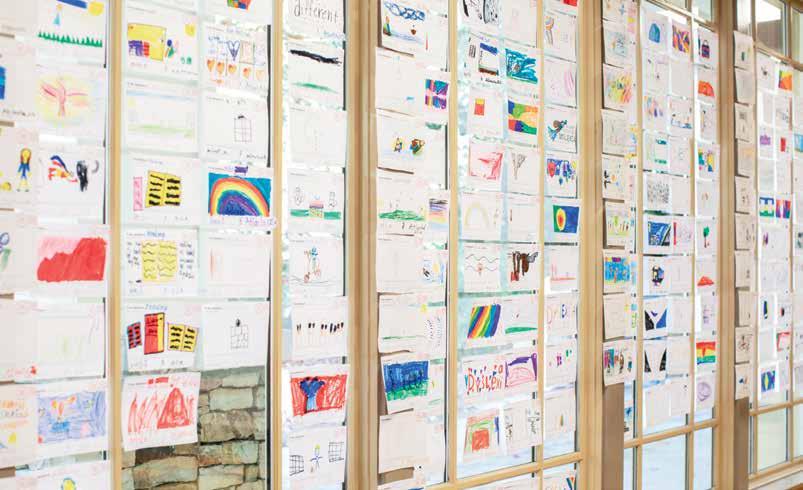

Dyslexia is a superpower, a gift, everything. These are just some answers to describe dyslexia for the Dear Dyslexia: “The Postcard Project.” With written words and creative drawings, The Postcard Project aims to connect the global dyslexia community through their strengths and unique perspectives. From all over the school, The Postcard Project represented the unique relationships with dyslexia while celebrating all the positive aspects.
Annie Oates ’08: Teacher and Alumni Highlight, Nov. 30 ( 192)
�� Meet a very special alum and current 1st-grade teacher at The Schenck School!
Dyslexia Day at the Capitol: Jan. 31 ( 150)
Dyslexic indiviuals can change the world. ��
Valentine’s Day: Feb. 14 ( 103)
Check out the memories that warm our hearts! ����
OT: Jan. 17 ( 45)
Our kindergarteners … were able to learn so many things while also having fun! ��
Learning is Better Together: Feb. 20 ( 80)
Learning is more fun when you do it together! ��
See the full picture! Follow us @SchenckSchool

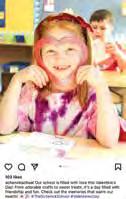

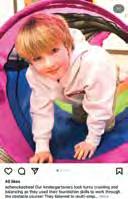
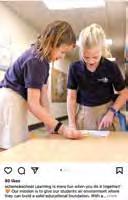


Team Schenck showed up in full force at The Dyslexia Dash. Held each year during Dyslexia Awareness Month, IDA-GA holds a race to raise funds for dyslexia resources across Georgia. At 8:30 a.m. on October 21, 2023, Schenck teachers, staff, students, their families, and several other schools were off to the races to support dyslexia awareness.
For three vibrant days in November, grandparents and special friends filled our campus with joy and laughter, visiting students right in their classrooms. Many joined us for not just one, but multiple days! Luckily, the weather was on our side, offering bright and cheerful days for these special visits. As visitors arrived, buzzing with excitement, they embraced the students and immersed themselves in the life-changing education The Schenck School provides. It was a joyous celebration of family and learning!


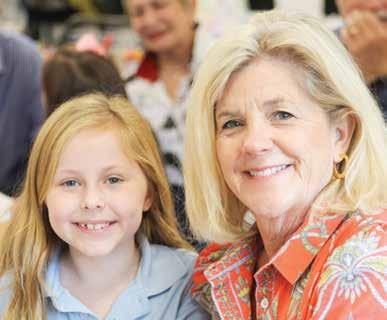



1. How long have you been at Schenck, and what has your journey been like?
I am completing my 32nd year at Schenck. I began as a fourth-grade teacher and, over the years, taught fifth, sixth, seventh, and eighth grade (when we had a Middle School), and then third grade for the longest stretch. I’ve also logged many tutoring hours, taught summer camp, and still teach our Adult Dyslexic Program. I became principal when Ellen Hill went out on maternity leave 19 years ago.
2. What is the most rewarding part of your job?
The most rewarding part of this job is connecting with people. It might be connecting with a kid applying here who doesn’t understand why they can’t read, a teacher seeking new ideas to smooth the way for a struggling student, a colleague with a big new idea for the School, or an adult who missed out on a strong foundation for reading.
3. If you could give your younger self any advice about being an educator at The Schenck School, what would it be?
Never think you know it all because there is always more to learn. Be open to new ideas and find joy in challenges. Keep track of people along the way and stay connected—the years fly by!
4. Who made the biggest impact on your career?
It’s impossible to boil it down to one person. I could say David Schenck, knowing him turned my life towards sticking with this work. I could say Marge Tillman, who took a chance by hiring me and who also trained me. I could say Cheryl Mullins, who was my steadfast companion, guide, and friend as we shared the principal role for many years. I could say Ellen Hill, who has consistently been my best cheerleader, promotor, and confidant. It could be every dyslexic person I have had the pleasure of teaching.
5. How do you like to spend your time outside of school? Do you have any hobbies or activities that you enjoy?
I enjoy being outside, gardening, and puttering. I’m good at fixing things. I love to go to Lake Lanier, especially with my kids and grandkids. My husband and I both enjoy birdwatching, though he’s the expert. Of course, even though I’m dyslexic, I love to read.

On January 17, we welcomed Dr. Kristin Sayeski, Associate Professor of Education at The University of Georgia. Dr. Sayeski is best known for her work and research identifying best practices for working with students with Dyslexia. We hosted a community gathering where she broke down the key components of her new book, Unraveling Dyslexia: A Guide for Teachers and Families







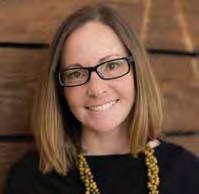
Dr. Liz Stevens, Assistant Professor in the Department of Special Education at the University of Kansas, spent three days immersed in all things The Schenck School and ReadSource in February. One of the highlights of her trip was visiting Slater Elementary and Price Middle School, where she learned about the impact ReadSource has on students through our partnership with Purpose Built Schools Atlanta. As Dr. Stevens shared in her community talk titled Sum or Some? The Role of Math Vocabulary in Supporting Students with Mathematics Difficulty, her love of reading instruction led to her work on vocabulary and language comprehension in math, and resulted in invaluable information for teachers of students with learning differences. She completed her visit by partnering with our teachers for a workshop on schema-based instruction, an evidence-based strategy in which students understand, classify, organize and solve word problems, and is particularly effective among students with learning differences.
Dr. Paul Riccomini, Professor of Education at The University of Pennsylvania, visited The Schenck School on April 10-12. Dr. Riccomini led a workshop for teachers that focused on the learning progression of building fluency and automaticity of math facts as well as instructional strategies specifically for students with working memory challenges. The School community and our partners were invited to his talk, Understanding Dyscalculia: Strategies for Supporting Math Learning Additionally, parents attended a Q&A breakfast in which they learned about integral parts of math instruction and ways to best advocate for their child in the math classroom.



In the rapidly changing landscape of education, the Orton-Gillingham Approach to teaching reading stands out as the gold standard. As we navigate the complexities of literacy education, ReadSource has strategically adapted its training programs to embody the principles of this renowned approach. This approach, known for its effectiveness in teaching individuals with dyslexia and other reading challenges, is at the heart of ReadSource’s success. Our commitment to excellence and innovation in teaching reading ensures that every educator we train is equipped to unlock the full potential of their students, setting the stage for a transformative educational experience.
Founded in 2013 by The Schenck School, ReadSource set the gold standard for teacher training and professional development in reading remediation. A decade later, it remains the premier resource for educators seeking expertise in the Orton-Gillingham Approach, reading remediation instruction, and smallgroup reading interventions based on the science of reading. Through its comprehensive training programs, ReadSource specializes in empowering teachers to better assist students with dyslexia and other reading challenges.
While there are many programs for teachers to consider, few are as insightful, resourceful, and unique as Orton-Gillingham training programs. Purposely labeled as an approach rather than a method, the Orton-Gillingham Approach is a structured, multisensory technique designed to help individuals, particularly those with dyslexia or other

reading difficulties, learn to read, write, and spell more effectively. It is designed to assist teachers in personalizing educational experiences to meet their students’ needs.
Developed in the 1930s by Dr. Samuel T. Orton, a neuropsychiatrist, and educator Anna Gillingham, the Orton-Gillingham Approach is based on the understanding that many individuals with reading difficulties struggle because they have not been taught in a way that aligns with their individual learning styles. With so many benefits, OrtonGillingham training provides teachers endless opportunities to help their students thrive.
Key features of the Orton-Gillingham Approach include:
• Multisensory Instruction: Lessons incorporate visual, auditory, and kinesthetic-tactile pathways to engage learners through various senses. This multisensory approach helps reinforce learning and memory retention.
• Structured, Sequential Learning: Lessons are carefully structured and follow a sequential progression, starting with basic phonological and phonemic awareness skills and gradually advancing to more complex language concepts. This step-by-step approach ensures learners build a strong foundation before moving on to more challenging skills.
• Explicit Instruction: Concepts are explicitly taught, with an emphasis on clear explanations, modeling, and guided practice. Teachers provide direct, systematic instruction, breaking down skills into manageable parts and providing ample opportunities for practice and reinforcement.
• Individualized Instruction: The Orton-Gillingham Approach recognizes that learners have different strengths, weaknesses, and learning styles. Lessons are tailored to meet each student’s individual needs, allowing for personalized instruction and targeted remediation.
• Continuous Assessment: Progress is continually monitored through ongoing assessment and observation. Teachers regularly evaluate student performance to identify areas of difficulty and adjust instruction accordingly.
ReadSource proudly advances the legacy of the OrtonGillingham Approach. By offering online resources and comprehensive Orton-Gillingham training courses, ReadSource plays a crucial role in equipping teachers,



school districts, and professional tutors with the tools needed to enhance their students’ educational experiences. Annually, approximately 500 educators participate in our training programs, underscoring our commitment to empowering communities. Our objective is not only to improve reading abilities and boost academic confidence among learners but also to foster success through community support and education, continuing the impactful tradition of the Orton-Gillingham Approach. By providing educators with top-tier training through ReadSource, we are doing more than addressing current educational needs; we’re laying the groundwork for a future where every student can excel academically. ReadSource plays a critical role in shaping this future, not just by participating but by actively contributing to a framework where quality education unlocks endless opportunities for all students.
Our partnership with Purpose Built Schools Atlanta (PBSA) since 2018 exemplifies how crucial collaborations are in driving educational progress, particularly through our direct remediation services. We’re excited to renew our partnership, aiming to continue enhancing educational outcomes at Slater Elementary and Price Middle School. Through highly trained ReadSource Tutors, our goal is to assist students struggling with reading to achieve successful high school and college graduation. This renewal, effective from the 2024-2025 to the 2028-2029 school years, emphasizes the importance of collaborative efforts in promoting positive change and ensuring all learners have equitable access to quality education, with funding structured to require equal contributions from ReadSource and PBSA each year.

Auction & Gala Stats
308 Attended
$70,000
Raised for Fund A Need
Highest Bid: $7,100 on Sea Island River House
$263,875
Total Raised

At the “Betting on Success” Auction and Gala, held at Cherokee Town and Country Club on March 22, our community went all in for a night of fun and fundraising. We celebrated in true casino style, highlighting the fantastic spirit of generosity that thrives within our School’s community. It was a spectacular evening where laughter, camaraderie, and the joy of giving were the biggest wins of all.




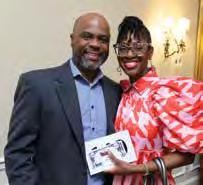







Turning “I Think I Can” into “I Thought I Could”By Dr. Kara A. Loftin


Recently, I was reminded of a blog post from years past sharing lessons learned from the classic children’s story, The Little Engine That Could, by Watty Piper, such as courage, strength, and a can-do attitude. The oft-recited words, “I think I can, I think I can…” to me, illustrate something even greater: self-efficacy.
Self-efficacy is the belief in one’s ability to meet the challenges ahead and complete a task successfully. You may recall that as a result of an engine breakdown, a group of toys and dolls were left looking for a way to get up and over a mountain to reach the children on the other side. Many engines came and went, but alas, the Little Blue Engine, not as big nor as strong as other engines, came along and offered to help. At first, the Little Blue Engine wasn’t completely sure it would be able to do something that it had never done before. However, quickly this doubt changed and the Little Blue Engine started to think it really could climb the mountain. But it wasn’t only the Little Blue Engine’s belief in its ability that allowed it
to get up and over the mountain to deliver the dolls and toys. The thought led to specific actions, “puff, puff, chug, chug;” actions that ultimately resulted in achieving the desired goal. Despite never making it up and over the mountain before, the Little Blue Engine began chanting, “I think I can,” until the task was accomplished. Through perseverance and resilience, the Little Blue Engine turned “I think I can” into “I thought I could.”
There is strong empirical support for the direct effects of self-efficacy and academic achievement. Just like The Little Blue Engine, students with learning differences, such as dyslexia, may struggle with this construct. Many have experienced


There isn’t a shadow of a doubt that our students can do hard things and will move more fully into their potential.”
Our students are multi-faceted, ever-evolving, and full of potential. By focusing on what our students can do, they are provided opportunities for academic success, they build resilience and a growth mindset, and self-efficacy blossoms.”
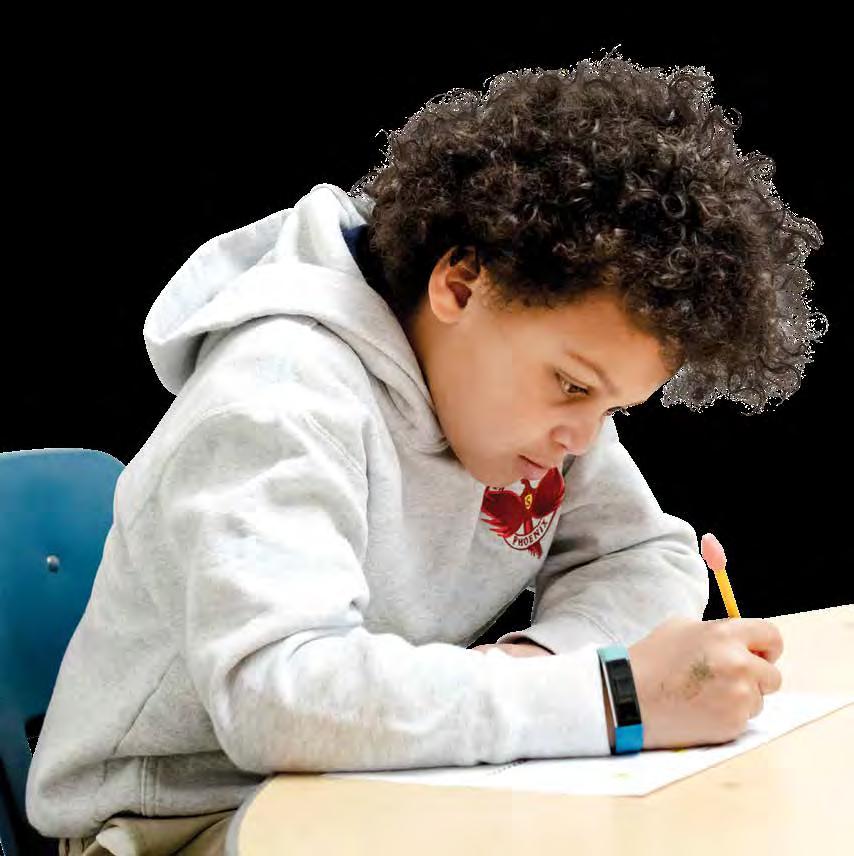
frustrations at school and for some these frustrations lead to the erroneous belief that they cannot or will not find success in school. At The Schenck School, I am continually awed by our faculty, who understand the strong, positive associations between efficacy, both individual and collective, and each student’s ability to achieve. There isn’t a shadow of a doubt that our students can do hard things and will move more fully into their potential. This understanding is made evident daily in our classrooms as our teachers engage in instructional practices that foster self-efficacy among our students. While not exhaustive, these research-driven strategies include metacognitive awareness so that our students understand how they learn best, self-regulation to enhance our students’ ability to set goals, make plans, and manage emotions to reach their desired outcome, and self-determination so that our students learn how to make informed choices and manage their lives. A best practice in the education for students with dyslexia is to equip students with the skills, attitudes, and opportunities


to play an active, prominent role in their own learning all while boosting their self-confidence. Fostering our students’ self-efficacy lays out a path to this end.
The Little Engine That Could is an illustration of the belief in one’s ability to achieve. However, the story doesn’t end there. Look again at the toys and dolls in the broken engine. Together, they joined the Little Blue Engine, believing it could get over the mountain and deliver the toys to the children. This shared belief among the Little Blue Engine and the toys and dolls manifested into the action steps required to find success. At The Schenck School, not only do we seek authentic opportunities to grow our students’ self-efficacy, we also recognize that all of us must be active partners who also believe wholeheartedly in

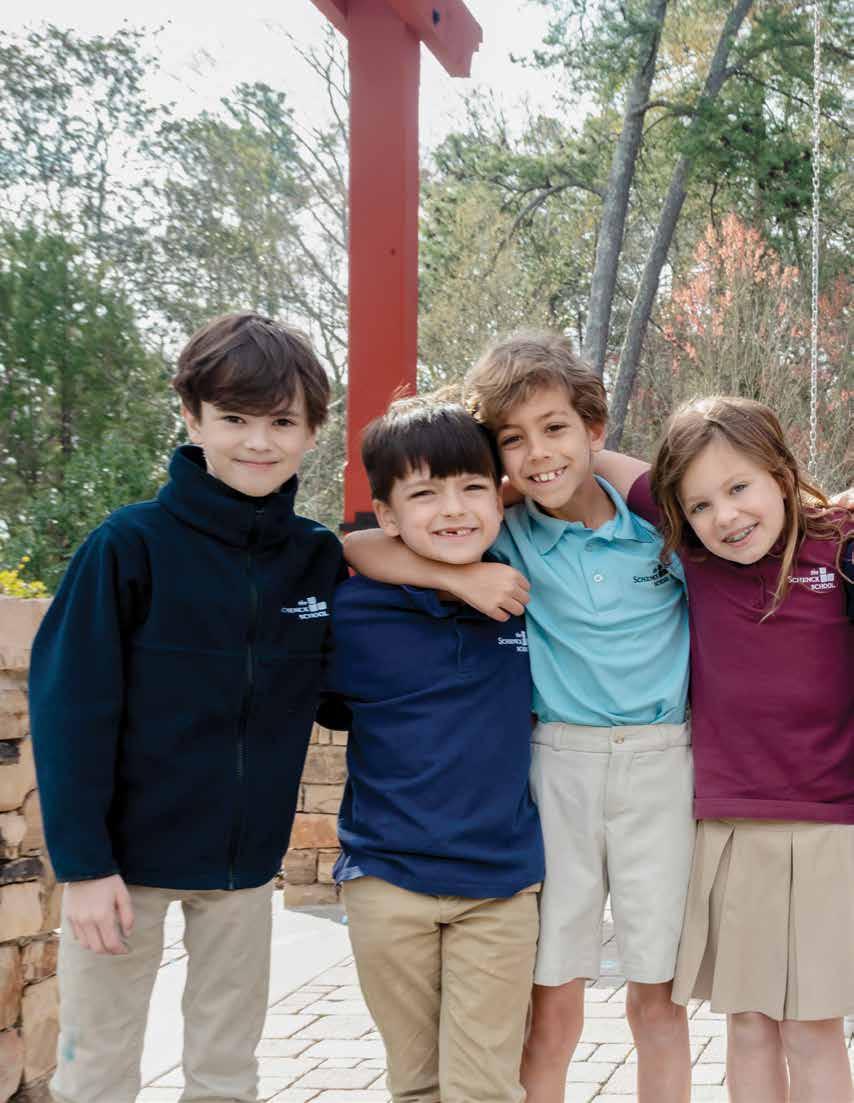

“School should always be a fun place. It’s what makes The Schenck School very special. It’s a happy place to be and the children get all kinds of great confidence in themselves.”
— David SchenckThe Schenck School Reading Model—Learning Environment, Decoding & Encoding, Phonological & Phonemic Awareness, Writing, and Reading Comprehension: Fostering Successful Teaching
At The Schenck School, our approach to supporting dyslexic learners is harnessed in our Reading Model, designed to empower students through five foundational elements: Learning Environment, Decoding & Encoding, Phonological & Phonemic Awareness, Writing, and Reading Comprehension. These components are not standalone pillars but interconnected facets that collectively nurture our students’ growth, resilience, and success.
• Positive student-teacher environment
• Diagnostic, appropriately paced and cumulative
• Similar learning profiles
• Oral language
Dyslexic learners often encounter challenges that can seem insurmountable without the right support. A thoughtfully structured learning environment addresses the specific needs of dyslexic students and is arguably one of the most important pillars of The Schenck School Reading Model. Our team-teaching approach allows teachers to get to know their students on a personal level, tailoring their lessons to lean into the strengths of the students and address what is challenging for them. Whether it’s seating arrangements that minimize distractions, the use of technology to aid learning, or the presence of visual aids that support memory and comprehension, every element of Schenck classrooms is considered in order to mitigate challenges throughout the school day. This deliberate and supportive structure ensures that all students have access to the tools and strategies they need to succeed.




Decoding and encoding, or more simply put, reading and writing, are the keys to unlocking the written language. In teaching these skills simultaneously, we reinforce the interconnectedness of reading and writing, providing students with a clearer understanding of how language works. Whatever is written is read, and whatever is read is grounded in the instruction of the logical structure of the English language. This dual approach demystifies reading and spelling for our students. As students progress at Schenck, they are introduced to new and clever ways to spell and incorporate words into everyday usage. In Kindergarten and first grade, students might use sand to trace letters and words; feeling the sand on their fingers and the motion of the letters helps them address different phenoms. As students move through the curriculum, they may start writing with dry-erase markers on desks, like in third grade, adding prefixes and suffixes to their letters to form words. This technique weaves together different learning styles and creates a system of tactile memorization that students find useful as they continue their education.
“Learning begins at the tip of a pencil.”
— David Schenck
• Alphabetic principle
• Letter formation
• Syllables
• Decoding/encoding
• Morphology
• Oral language
Phonological & Phonemic Awareness
• Phonological/morphological awareness
• Phonemic awareness
• Oral language
Central to our Reading Model is the development of Phonological and Phonemic Awareness. By focusing on the ability to recognize, manipulate, and understand the sounds within words, we address one of the core challenges faced by dyslexic learners. Through engaging, multisensory activities, students improve their auditory and phonemic skills, which are crucial steps toward fluent reading and effective communication. A technique that we’ve found to be incredibly effective is the tapping method (pictured below), where students will tap out vowel sounds on their arms. In third grade, students can be seen standing and stomping out vowel teams or using the big red staircase to count the number of syllables in a word. In kindergarten, there is a lot of emphasis on rhyming and rhyme recognition.
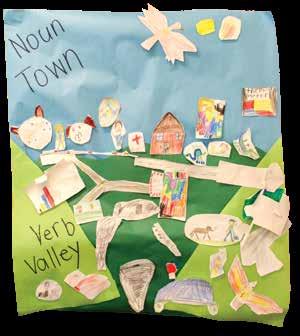

Writing
• Handwriting
• Written expression
• Language structure: syntax, grammar & usage
• Oral language
In the writing component of the reading model, students discover their voices and learn to express their thoughts clearly and creatively. We integrate spelling, grammar, and mechanics with expressive writing tasks, allowing students to see writing as a form of personal expression rather than just another academic requirement. This approach not only improves written communication skills but also boosts self-esteem as students take pride in their work. Stacey Prusak, second grade teacher, and OGA Fellow In Training, is taking writing to the next level with her “noun town” and “verb valley” (pictured, above left) to help students remember parts of speech that will help with their writing.

Reading Comprehension ensures that students can not only read words but also understand, analyze, and reflect on their meaning. Through strategies that promote active engagement with texts, we help students develop the critical thinking skills necessary for deep comprehension. This empowers them to access new ideas, perspectives, and worlds, enriching their academic journey and personal growth. As a way of teaching reading comprehension, and one that students and teachers find success with alike, we use the “KWL” sheets with their charts of “I know, I want to know, I learned.” One of the most important facets of teaching is knowing that student learning is not uniform and students will learn from different approaches. When it comes to Reading Comprehension, our teachers take that into account, teaching our students multiple ways to comprehend stories—including Readers Theater, where students read a book, dress like the character, and reenact a section of the book to a larger audience. It’s one of our landmark events in third grade, and it feels special for students when they complete the assignment.
The Schenck School Reading Model is more than a curriculum; it’s a holistic approach to education designed specifically for dyslexic learners. By addressing the unique challenges and harnessing the inherent strengths of our students, we soar on prepared for success in life beyond The Schenck School. Together, these five elements form a comprehensive framework that supports, challenges, and celebrates our students every day.
“Learning to write sophisticated sentences makes it easier to comprehend long sentences that students encounter in text. When writing is tied to content, it helps to solidify and expand students’ background knowledge, which is an essential component of reading comprehension.”
— Laura Dreyer
• Background knowledge
• Discussion, reasoning, making connection
• Language structure: syntax, grammar & usages
• Literary structures
• Vocabulary/morphology
• Fluency
• Oral language
Math. This word encompasses beautiful ideas, natural events, progress, technology, and endless possibilities. As students, some of us may have said, “math was easy for me,” or “I was never good at math.” However, for some, there was a teacher who taught math in a way that made sense when it previously had not.
This is our aim at The Schenck School. We have implemented strengthsbased instruction to help students not only make sense of math but also make connections that provide a foundation for thinking and reasoning. After all, math is a life skill we need in order to function successfully in society and make informed decisions!
Just as with reading fluency, we recognize that several processes need to be synchronized for an automated understanding of numbers. These processes encompass visual perception and memory, reading and comprehension, sequencing, and visual motor coordination. By applying the OrtonGillingham Approach to reading instruction to our own math instruction, we actively identify strengths and weaknesses in our students’ understanding of the subject and then proceed to tailor our instruction to meet their individual needs. At Schenck, we recognize that every one of our students possesses inherent strengths, and we are committed to providing every opportunity for them to showcase these strengths.
Consider your child’s experience with reading and writing. Your child may proudly recount every detail from a story or a non-fiction passage that interests them yet find it challenging to transfer this information onto paper. A similar challenge exists in math for many of our students. As math becomes more complex, language-heavy, abstract, and reliant on symbols, students may require additional support. By employing support that leverages students’ visualspatial and reasoning strengths, such as visual models and hands-on manipulatives, we enable students to reason through and articulate their thought processes verbally. This approach helps students use their own understanding to make the steps of a problem more
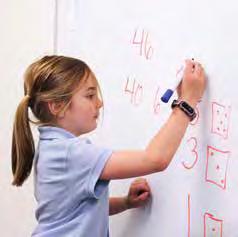
“From Kindergarten to 8th grade, students learn at least 1200 math-specific vocabulary terms. Couple that fact with the research that indicates students can learn about 400 new words per year. That means that about 1/3 of all vocabulary across all domains and grades K-8 (hopefully taught through direct, explicit, and systematic instruction) will be math-specific words. That is so much more than what I would have guessed! Puts the importance of intentional math vocabulary instruction in perspective.”
— Dr. Kara Loftin

meaningful. Incorporating visuals with mathematical language makes the steps of the problem comprehensible. It shifts students from relying on rote memorization to truly learning and understanding.
As dyslexia is a language-based learning disability, our math instruction purposefully incorporates vocabulary. Our teachers implement targeted vocabulary practice through explicit instruction, games, puzzles, and hands-on activities. The students use and apply this approach in class discussions to help them retain and retrieve information as they make connections among concepts.
During Dr. Liz Stevens’ visit to our school, she shared ongoing research about inconsistencies in math vocabulary across published curricula, challenges in math that are rooted in language, and evidence-based strategies for attacking the language of word problems. Her work continues to inform our vocabulary instruction at the School. As Dr. Stevens stated in her community talk, we should keep our expectations high for our students. Although precise mathematical language can be sophisticated, your first grader may come home and use the word “equation” or “commutative property.” This precise and accurate mathematical vocabulary mitigates challenges later.
Many students with dyslexia have learning profiles that highlight their strengths in visual-spatial and fluid reasoning, and it is absolutely beautiful to see these strengths in the classroom. Some students may be able to reason through a problem without the traditional “show your work” requirement, as their reasoning is more efficient and accurate than a stepby-step rote algorithm that is memorized with little to no meaning.



When we consider what we know about how the brain learns, what students with dyslexia need to be successful, and our students’ academic strengths, the possibilities are endless for them. Spatial reasoning, a significant predictor of math success, is quite often a strength in our students. Is your child a creator? Do they build amazing structures, complete beautiful artwork, enjoy maps, or love to craft? This is their spatial reasoning shining through.
Making math relevant through personalized word problems with subject matters that students can relate to allows us to capitalize on students’ reasoning. It’s important for students to think about what they
know about the numbers prior to immediately applying an algorithm. We want them to contemplate and then calculate so they are thinking and reasoning as they solve. For example, one student may use a compensation strategy to solve 49+56, another student may estimate so they can check for the reasonability of their answer, and still, another student may use the traditional algorithm. Any of these strategies still require a student to reason and make sure their answer makes sense.
Technology also contributes to strengthsbased learning as several programs provide visual models and virtual manipulatives to help students conceptually understand math more complex concepts. There is significant research about the importance of manipulatives through high school despite their infrequent use. As we think about advocacy and the journey ahead for our students, the use of manipulatives is not only important but essential for some students to make sense of abstract, complex math concepts.

How long at Schenck?
2 Years (5th and 6th Grade)
Involved in?
Girl Talk
Soaring on to?
Landmark
Christian School
Shout out?
All my 6th grade classmates, and every teacher at Schenck.
I love you all!
As you Soar On, what lesson will you take with you?
I will take anything and everything with me, especially how to divide words. I will also bring my love of math, like my geometry lessons from Mrs. Catalano.
What does Schenck mean to you?
To me, Schenck means a safe place, a second/third home (in my case), and a place full of love.
How have you grown at Schenck in the two years you have attended?
Physically, I’ve grown a whole foot since I’ve been at Schenck. Mentally, I’ve grown with my reading accomplishments and handwriting. My handwriting was okay in 4th grade but is much better now. Also, thank you to Mrs. Dreyer for teaching me cursive. I now love cursive and know all my cursive letters.
What advice would you give to the incoming Schenck students?
Schenck is a great place, so be yourself. Find your friends that let you be yourself. Schenck gives you the environment to do that.
What is your favorite memory from your time here, both in and out of the classroom?
The classroom never has a dry moment; we always dance, sing, and learn. At lunch and recess, we all come together and talk and laugh. We make after-school plans, like our end-of-school pool party.
Using a lyric from a song, how would you define your time at Schenck
• “I love Vermont, but it’s the seasons of the sticks”—Stick Season by Noah Kahan. I love this school, but it’s time for me to move on.
• “Miss you when you go”—Cups (Pitch Perfect’s “When I’m Gone”) by Anna Kendrick. How other people describe my time when I leave.
What are you going to do when you leave?
I’ll come to visit!

Be good, and be nice to your teachers. Don’t pick sides and if [your teachers] are upset, bring them an apple.”

Alumni gathered for our annual Social and Share program in January. Hosted by Hart Stuck, she and a panel of alumni, Michael O’Connor ’17, senior at Holy Innocents, Kendall Camp ’17, senior at Dunwoody High School, and Kendall Roberts ’22, 8th grade at Galloway, provided study tips for families of middle school and high school students—including reminding students that our phonics rules apply to all subject matters! Despite the weather, there was a great turnout, and students left feeling full—from all the delicious food— and equipped to tackle midterms and finals!


“Reconnecting and staying in touch with my former students is my favorite part of being a teacher. To see the incredible people they have become brings me such joy. Hosting events like this is a privilege and necessary for our community. Not everyone’s transition away from Schenck is smooth sailing, so our alumni need to have resources and remember that once a Phoenix, always a Phoenix—we’ve got their backs and are here for them in their struggles and shining moments!”
—Hart StuckSchenck School alumnus Collin Maher, currently a junior at The Mount Vernon School, started the Cocoa Classic 5K to provide new athletic shoes to economically challenged kids at a local elementary school. Last year, Lake Forest Elementary School students benefited from a donation of 629 pairs of shoes! This year, the recipients are the students at Ison Springs Elementary School.
All of us at the School are proud of Collin’s efforts. This year’s race was held on Saturday, February 17. Dr. Kara, Coach Jenny, Mr. Eric, and Ms. Jana ran on behalf of The Schenck School.


“One of my favorite things about The Schenck School is the close-knit yet widespread community we’ve built. Running in the Cocoa Classic 5K with two of my three kids alongside our head of school, Dr. Kara, our music teacher, Mr. Eric, and math coordinator, Ms. Jana, further exemplified that community spirit. I had so much fun running into former students along the route and seeing how far they’ve come since leaving The Schenck School.”
—Coach Jenny


Carrington Manous ’19 chose The Schenck School as the location to receive a special proclamation, the highest honor from the city of Atlanta, from local Councilman Michael Bond. As Miss Cobb County Teen, a current Woodward student, and author, Carrington has used her platform to become an advocate for dyslexia. With her nonprofit, Carrington Cares #DecodeDyslexia, and her children’s book, Dyslexia Doesn’t Define Me, she is redefining and reshaping the perceptions of individuals with dyslexia. At the end of the assembly, Dr. Kara awarded Carrington with a Schenck Alumni Ambassador certificate.
“To visit the school that helped to change my life and to see so many students whose lives will also be forever changed truly made my heart full of so much joy and complete pride!”
—@iamcarringtonelan




This spring, two long-serving faculty members are retiring from The Schenck School— Franziska Rutte and Jennie Curtis. Collectively, they represent almost 40 years of teaching at the School. They both look forward to the next chapter in their lives. They leave behind students, faculty, staff, parents, alumni, and more who have deep gratitude and appreciation for their dedication and commitment to Schenck.
“Franziska’s retirement marks the end of an era of exceptional teaching that went beyond the classroom, instilling in us the importance of environmental care and personal well-being. Her insightful, articulate, and kind-hearted nature has left a lasting impact, inspiring us to continue her legacy of nurturing mindful and well-rounded individuals.”
—Eric Taylor
“Franziska’s physical therapy background helped us learn the importance of movement in the classroom. She has been a stable, steady, and consistent leader for us ever since she came to Schenck.”
—Ellen Hill
“Franziska comes to school with one goal in mind— student engagement and understanding in everything she teaches. She digs deep to get to the root of what each student needs, and she works tirelessly to deliver instruction to them. It has been a pleasure to share the classroom with her for the last six years where we both did a lot of learning and growing together. “
—Katie Boehme
“Jennie has given her life to the education of young children. She cares deeply about her students and is passionate that early intervention is key to their success. Her intellect combined with her positive nature is an unmatched combination. She is a role model in every way, both professionally and personally. She is my hero!”
—Mary Galloway
“Jennie was instrumental in getting our Kindergarten program “up & running” and has been a tireless promoter of early intervention. Her wisdom, energy, sense of humor, kindness, and patience will be greatly missed by all of us on the Kindergarten team!”
—Laura Thwaite
“Jennie has been an incredible kindergarten teacher and an advocate for early intervention! She is a wonderful teacher, colleague, and friend and is an invaluable part of The Schenck School. Jennie is the true definition of a dedicated, hard-working, and joyfully spirited teacher. Each and every child, including myself, will forever cherish our time with her.”
—Susie McIntosh








“The ‘Read, Rise, Fly’ mural, created in 2016, is a collective masterpiece by all 250 students at our school, each designing their own interpretation of our mascot, The Phoenix. Depicting hundreds of birds soaring from a nest, the mural symbolizes the journey of growth and learning. Initially a small project, it evolved into a school-wide endeavor, reflecting the shared understanding that, like the birds, students will one day use the skills gained here to succeed beyond our walls. This artwork stands as a tribute to the courage and readiness to soar into new beginnings.”
— Steve Shaw